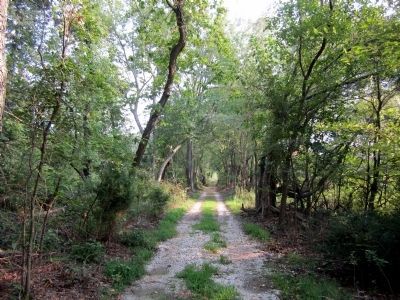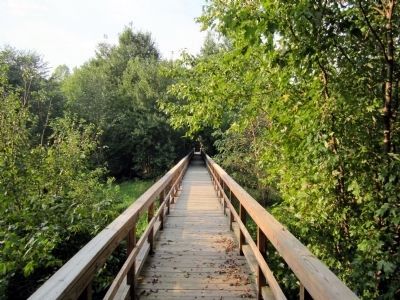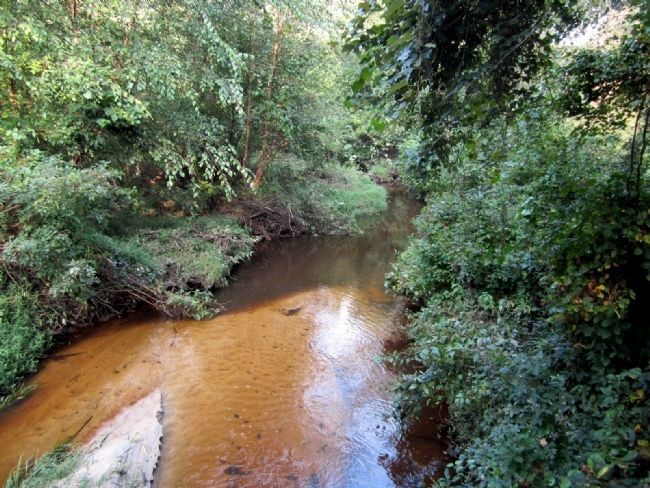Near Mechanicsville in Hanover County, Virginia — The American South (Mid-Atlantic)
Totopotomoy Creek
Richmond National Battlefield Park
(left panel)
Visiting Richmond National Battlefield Park
The concentration of Civil War resources found in the Richmond area is unparalleled. The National Park Service manages 13 sites, giving visitors an opportunity to examine the battlefield landscapes, to hear the stories of the combatants and civilian residents, and to understand the complex reasons why Richmond came to symbolize the heart and soul of the Confederacy.
Regulations
This is a partial list of park regulations. Site is open sunrise to sunset. Report suspicious activities to any park employee or call 804-795-5018. In emergencies call 911.
Alcoholic beverages are prohibited.
All natural and cultural resources are protected by law.
Relic hunting is prohibited. Possession of a metal detector in the park is illegal.
Hunting, trapping, feeding, or otherwise disturbing wildlife is prohibited.
Weapons are prohibited inside all park buildings.
Pets must be on a leash.
Recreation activities like kite-flying, ball-playing, and frisbee throwing are prohibited.
Motor vehicles and bicycles must remain on established roads.
(center panel)
1864 Overland Campaign
The fourth spring of the war began when Union armies launched a series of offensives across unconquered portions of the South. The action in Virginia included three separate campaigns, each defined by aggressive advances from Union commanders. While smaller armies fought in the Shenandoah Valley and around the Bermuda Hundred region south of Richmond, Gen. Ulysses S. Grant sent the largest Northern army against Gen. Robert E. Lee’s Confederates. The ensuing series of battles is known today as the Overland Campaign.
Costly stalemates at the battles of the Wilderness and Spotsylvania delayed Grant’s progress. Confederates next blocked his southward drive at the North Anna River, and then along Totopotomoy Creek at the end of May 1864. Finally the armies collided at Cold Harbor, just eight miles from Richmond. There Grant’s headlong assaults against Lee’s entrenchments on June 1 and June 3 failed. Despite enormous losses, the Union army retained the initiative and marched south to Petersburg, where Grant began the long process of cutting Richmond’s supply lines.
Wilderness May 5-6
Two days of close-quarters action in the thick woods west of Fredericksburg produced nearly 30,000 casualties and inaugurated a grueling campaign that saw the armies sweep across most of central Virginia.
Spotsylvania May 8-21
Grant ignored the indecisive results of the Wilderness and pressed southward toward more open ground. The Confederate army blocked him on May 8. For two weeks over 150,000 men fought for an advantage. The terrible combat at the Bloody Angle on May 12 defined this period and reenforced the campaign’s grim tone set at the Wilderness the week before.
North Anna River May 23-26
When the Union army moved away from Spotsylvania, Confederate infantry fell back to the next defensible ground, south of the North Anna River. Actions on May 23 and 24 weakened Grant’s momentum and forced him to look toward another movement to continue his campaign.
Totopotomoy Creek May 28-30
Hard marching and determination took the Union army away from North Anna and closer to Richmond. Just a dozen miles from the city, this creek saw the next collision of the armies. Aggressive probes up and down the creek valley ignited many small battles and proved to General Grant that the Confederates again blocked his direct path to Richmond.
Cold Harbor May31-June 12
The armies revisited ground first contested during McClellan’s 1862 campaign. This time the lines extended for nearly seven miles, with action beginning at the Old Cold Harbor crossroads and extending north and south from there. A major attack by the Federal army on June 1 partly succeeded; the larger follow-up attack on June 3 failed badly. The soldiers endured nine more days of sniping and misery in the entrenchments before both armies marched south toward Petersburg, ending the “overland” portion of the 1864 campaign.
(right panel)
Rural Plains and Totopotomoy Creek Trail
For most of its history, Rural Plains abided the steady rhythm of farm life: sow, tend, harvest. For 275 years, this was the home of the Shelton family— at least eight generations of Sheltons grew up here. Before the Civil War, slaves sustained the nearly 1,000-acre plantation and the lifestyle of their prominent owners.
On May 29, 1864, war shattered the rhythms of Rural Plains. Union officers took the house as a headquarters. Soldiers shoveled earthworks across the farm’s fields. The Shelton family took shelter in the basement, while the family’s 37 slaves sought refuge where they could. The fighting that swirled around the house transformed this homeplace into a battlefield—an identity that endures still.
The Sheltons remained here until 2006, when the land passed to the National Park Service. Today, 124 of the original 1,000 acres remain.
“On reaching the Shelton house, a fine southern mansion situated on and overlooking Totopotomoy Creek, our skirmish line came under fire from the enemy’s skirmish line on the opposite bank…this looked as if serious work was before us, and we now commenced intrenching [sic] in earnest.”
Lt. Robert Robertson, 93rd New York Infantry
Erected 2011 by Richmond National Battlefield Park.
Topics and series. This historical marker is listed in this topic list: War, US Civil. In addition, it is included in the Former U.S. Presidents: #18 Ulysses S. Grant series list. A significant historical month for this entry is May 1864.
Location. 37° 39.675′ N, 77° 20.773′ W. Marker is near Mechanicsville, Virginia, in Hanover County. Marker can be reached from Studley Road (Route 606) 0.1 miles west of Shelton Pointe Drive, on the left when traveling west. Touch for map. Marker is at or near this postal address: 7273 Studley Road, Mechanicsville VA 23116, United States of America. Touch for directions.
Other nearby markers. At least 8 other markers are within walking distance of this marker. Rural Plains (a few steps from this marker); Damaged but not Destroyed (within shouting distance of this marker); Totopotomoi (within shouting distance of this marker); Lives on the Line (about 400 feet away, measured in a direct line); Totopotomoy Line (about 700 feet away); Digging In Under Fire (approx. 0.2 miles away); Fighting at the Totopotomoy (approx. half a mile away); a different marker also named Totopotomoy Line (approx. half a mile away). Touch for a list and map of all markers in Mechanicsville.
More about this marker. On the left panel is a map of Civil War sites managed by the Richmond National Battlefield Park.
On the center panel is a map of the 1864 Overland Campaign.
On the right panel is a map of the Rural Plains and Totopotomoy Creek Trail with the caption, “The two-mile trail beginning at the Shelton house leads to several well-preserved Union earthworks. Continue south across the bridge to see Confederate earthworks and cannon positions—following the historic movement of Union troops as they attacked down the slope.”
On the right panel is a photo of “Lt. Robert Robertson, 93rd New York Infantry” with the caption, “Union Lieutenant Robert Robertson fell badly wounded here at Totopotomoy Creek. His wartime journal is the basis for much of what you will read along this trail.”
On the right panel an “Illustration by Alfred R. Waud, Civil War artist correspondent” with the caption, “This sketch from the Battle of Cold Harbor shows Coehorn mortars. During the battle here, Union soldiers positioned such mortars very near the Shelton house.”
Also see . . .
1. Totopotomoy Creek Battlefield at Rural Plains. Richmond National Battlefield Park (Submitted on September 2, 2011, by Bernard Fisher of Richmond, Virginia.)
2. The Battle of Totopotomoy Creek, May 29-31, 1864. Richmond National Battlefield Park (Submitted on September 2, 2011, by Bernard Fisher of Richmond, Virginia.)
3. Rural Plains (pdf file). National Register of Historic Places (Submitted on September 2, 2011, by Bernard Fisher of Richmond, Virginia.)
4. Totopotomoy Creek. CWSAC Battle Summary (Submitted on September 2, 2011, by Bernard Fisher of Richmond, Virginia.)
Credits. This page was last revised on September 9, 2020. It was originally submitted on September 2, 2011, by Bernard Fisher of Richmond, Virginia. This page has been viewed 1,688 times since then and 40 times this year. Last updated on September 9, 2020, by Bradley Owen of Morgantown, West Virginia. Photos: 1, 2, 3, 4, 5, 6, 7, 8. submitted on September 2, 2011, by Bernard Fisher of Richmond, Virginia. 9. submitted on August 28, 2010, by Bernard Fisher of Richmond, Virginia. 10. submitted on September 2, 2011, by Bernard Fisher of Richmond, Virginia. 11, 12, 13. submitted on September 12, 2011, by Bernard Fisher of Richmond, Virginia.
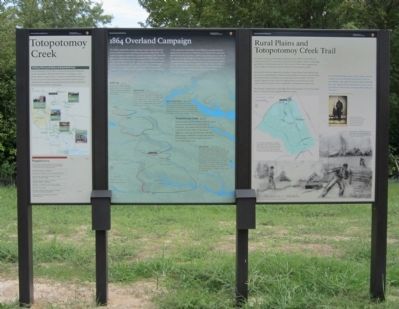
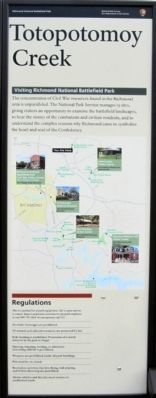
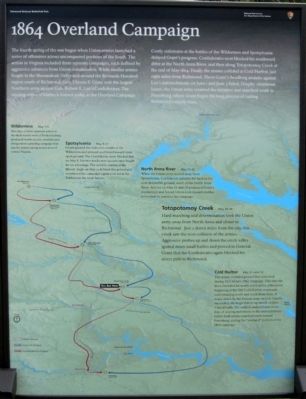
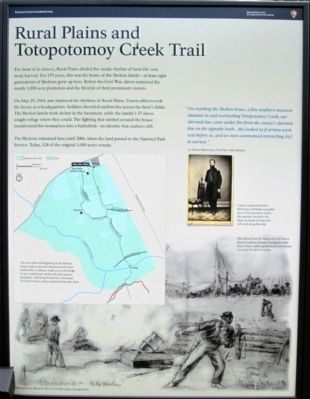
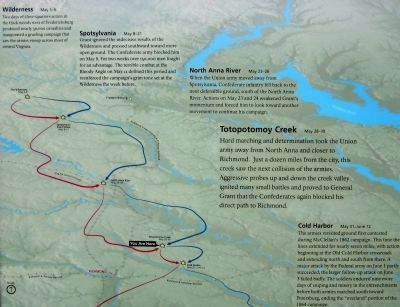
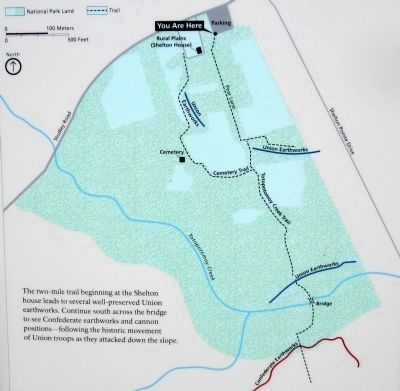
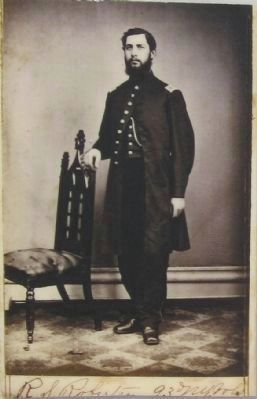
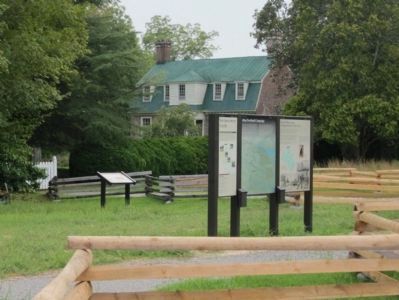
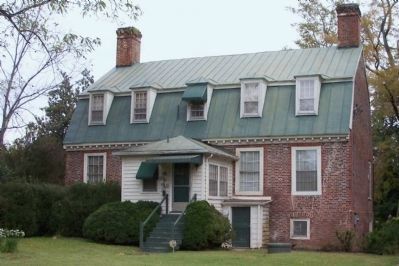
![The Cohorns[sic]--Cold Harbor. Click for full size. The Cohorns[sic]--Cold Harbor image. Click for full size.](Photos1/170/Photo170339.jpg?92201194800AM)
